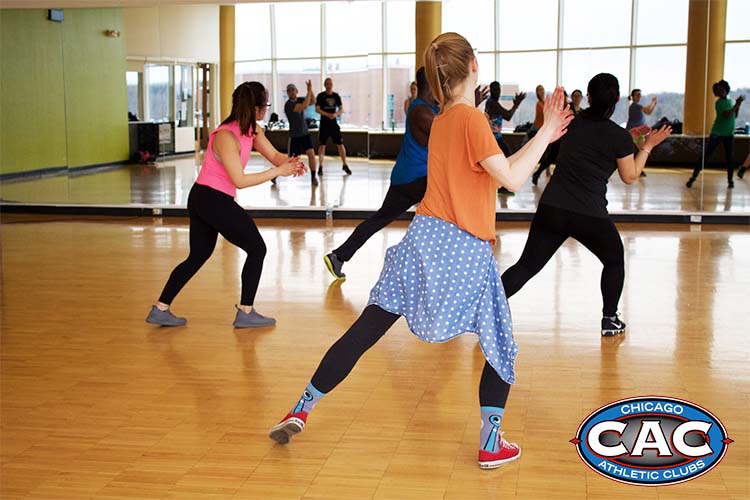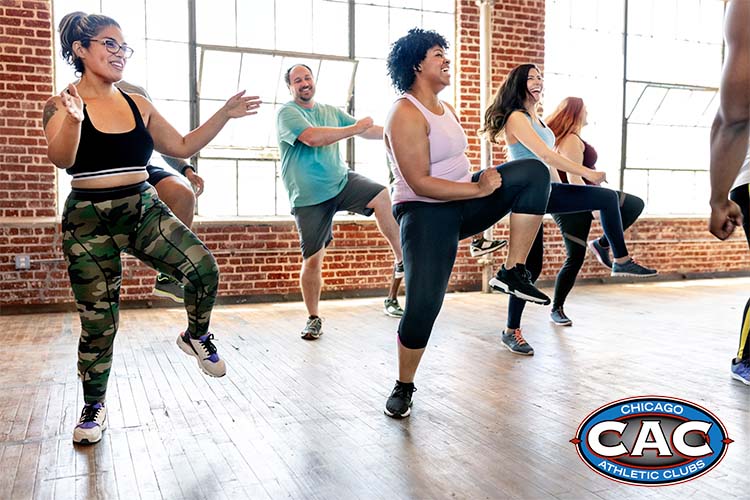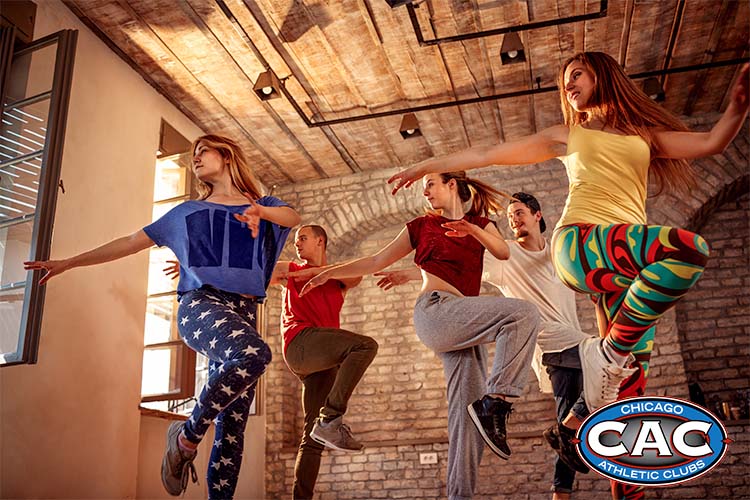MAKE A SPLASH
THIS SUMMER

Join Now For $0 Enrollment!
Learn MorePosted By: Chicago Athletic Clubs /
What is dance fitness, and how can it transform your exercise routine and relationship with fitness? This article will explore the benefits and types of dance fitness to help you embark on your new fitness journey while having a good time.
The truth is, it can be hard to get motivated. A few years ago the CDC did a study and found that 46% of Americans don't get enough exercise to keep their bodies and minds strong and in shape. A significant issue keeping people from working out more often is a lack of fun.
When exercise feels more like a chore than a healthy, invigorating activity, getting an adequate full-body workout is impossible. Sometimes we don't need more professional medical advice, we just need morale!
A straightforward solution to start enjoying exercise is taking up dance fitness classes to lose weight, improve flexibility, and strengthen your body while having fun exploring different styles.
There are even some online classes or YouTube videos out there, but we recommended finding a local gym or club to keep you motivated.
Keep reading at your own risk (because you're about to get addicted)!
So, what is dance fitness? While you might assume it’s as simple as spinning and jumping around, there’s an art to it that makes it a popular activity for many fitness lovers.
Dance fitness doesn’t focus on choreography or precise dance routines as you would anticipate from professional dancing–instead, it is a workout routine that incorporates dance led by an instructor to get a full-body exercise.
Dance fitness encompasses several exercises and activities, with less impact than other workouts, while incorporating various dance styles to appeal to people of all ages and skill levels. These dance workouts are perfect for those who want to incorporate fun into their workout routines with like-minded people.
Dance fitness can benefit you in several ways, from less-intensive workouts to ballroom dance and a full-body style of dance to get your heart rate up. But what are some examples of dance fitness you’ll encounter when you begin your journey ahead?
You can find these classes in many gyms and athletic centers. While these classes are the best way to incorporate effective dancing techniques into your workout routine, there are several examples you might forget to consider. Beyond traditional dance classes, you can practice dance fitness through some of the following examples:

You'll find plenty of unique dance styles when looking for dance fitness courses. Dance encompasses a massive range of movements that target different body parts, meaning that some styles will appeal to you more than others. But what are the types? Below are just a few.

Now, let’s get to one of the questions that got you here in the first place: what are the actual, proven benefits of dance fitness? Dance workout classes can unlock many health benefits to take your fitness journey to the next level. Below is a breakdown of some notable health benefits of dance fitness:

Joining an exercise class is an excellent way to get in shape while having fun–but what should you expect from your dance class? One concern you might have is your experience level and whether you need to know how to dance to succeed in a dance fitness class. Luckily, fitness classes are available for people of all skill levels, and you can easily find a beginner’s course to ease your way into fitness dancing.
Your dance class will typically begin with a warm-up session to prepare your mind and body for the workout routine. This process involves light aerobic exercises, stretches, and other mobility exercises to increase blood flow, loosen your muscles, and improve your flexibility before you start dancing.
Depending on the type of fitness dance, your instructor will guide you through different dance routines for most of the class. These moves are designed to be engaging, fun, and suitable for different fitness levels.
Another aspect to look forward to is the music–dance classes are typically accompanied by lively, upbeat music to boost your heart rate and excite you about the dance routine. Instructors select songs that align with the type of dance you’re learning to create an enjoyable atmosphere and help you stay in sync with your exercise routine.
As the course continues, your instructor will likely modify and progress the dance to cater to different abilities and allow participants to adjust the intensity of the workout based on their comfort level. You can stay at a low-intensity workout or challenge your body with moderate-intensive practices. Above all, expect to have fun: these courses have a unique approach to fostering a welcoming environment and encouraging participants to enjoy exercise.

Though the practices are similar, dance fitness differs from Zumba in critical ways. While aerobic courses encompass a range of fitness activities that include dance, Zumba is a challenging, intensive dance-based workout incorporating several Latin dancing styles more suitable for experienced practitioners.
Dance fitness focuses on different athletic gestures and movements, while Zumba is closer to the dancing you’d expect to see on a stage. While dance fitness is any exercise incorporating dance movements, Zumba only encompasses particular dance elements.
Accessing the health benefits of dancing is possible when you take dance fitness classes like the ones offered by Chicago Athletic Clubs. Our high-quality classes provide thorough workouts in a welcoming environment where people of all skill levels can enjoy staying active.
Getting started on your fitness journey is easy. Become a Chicago Athletic Clubs member today to dance your way to fitness.
| Chicago Athletic Clubs
| Chicago Athletic Clubs
| Chicago Athletic Clubs
| Chicago Athletic Clubs
© 2026 Chicago Athletic Clubs. All Rights Reserved. Privacy PolicyEmployee Login
https://www.chicagoathleticclubs.com/
https://www.chicagoathleticclubs.com/services/personal-training/
0
5000
true